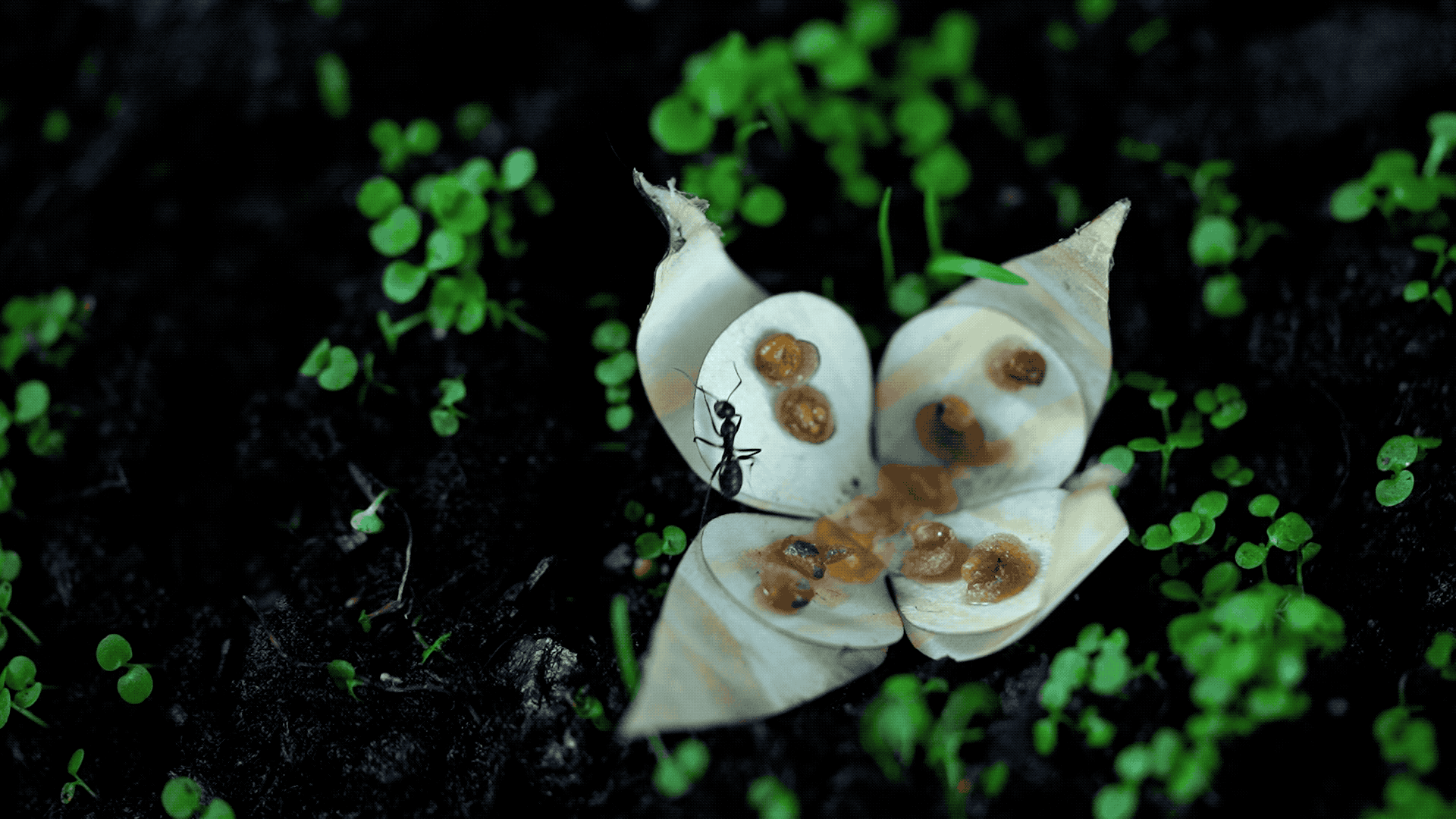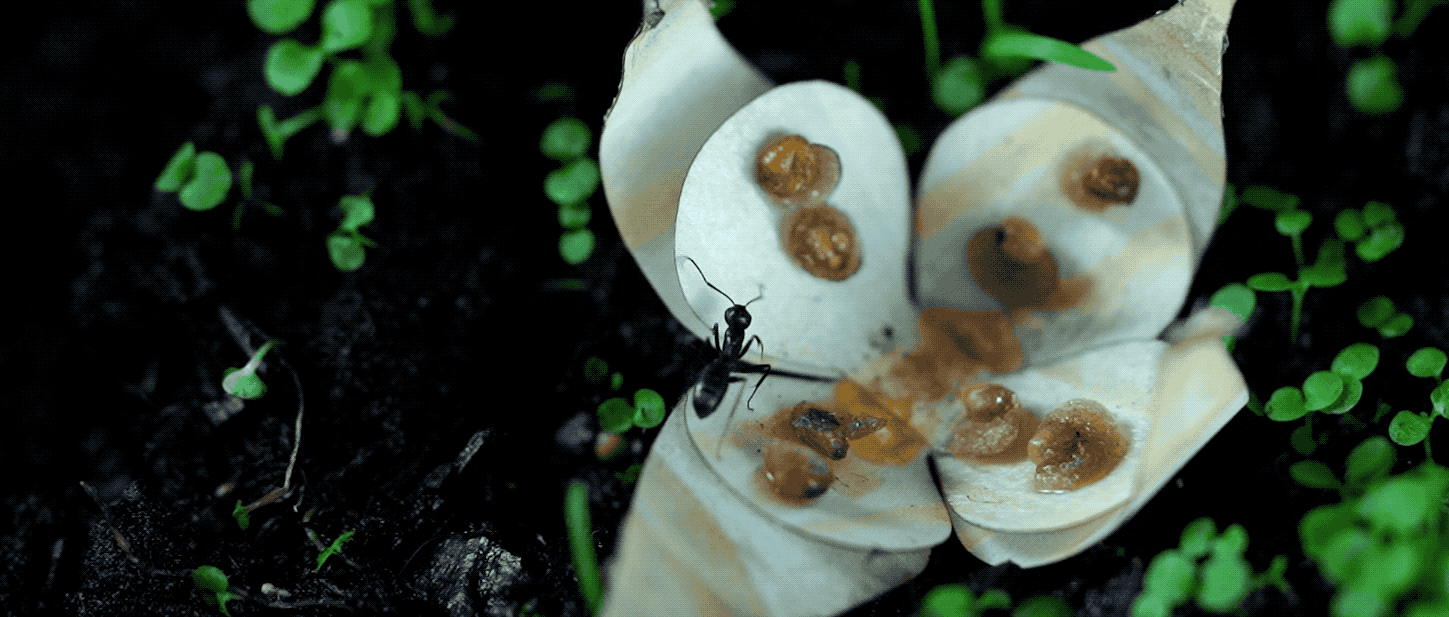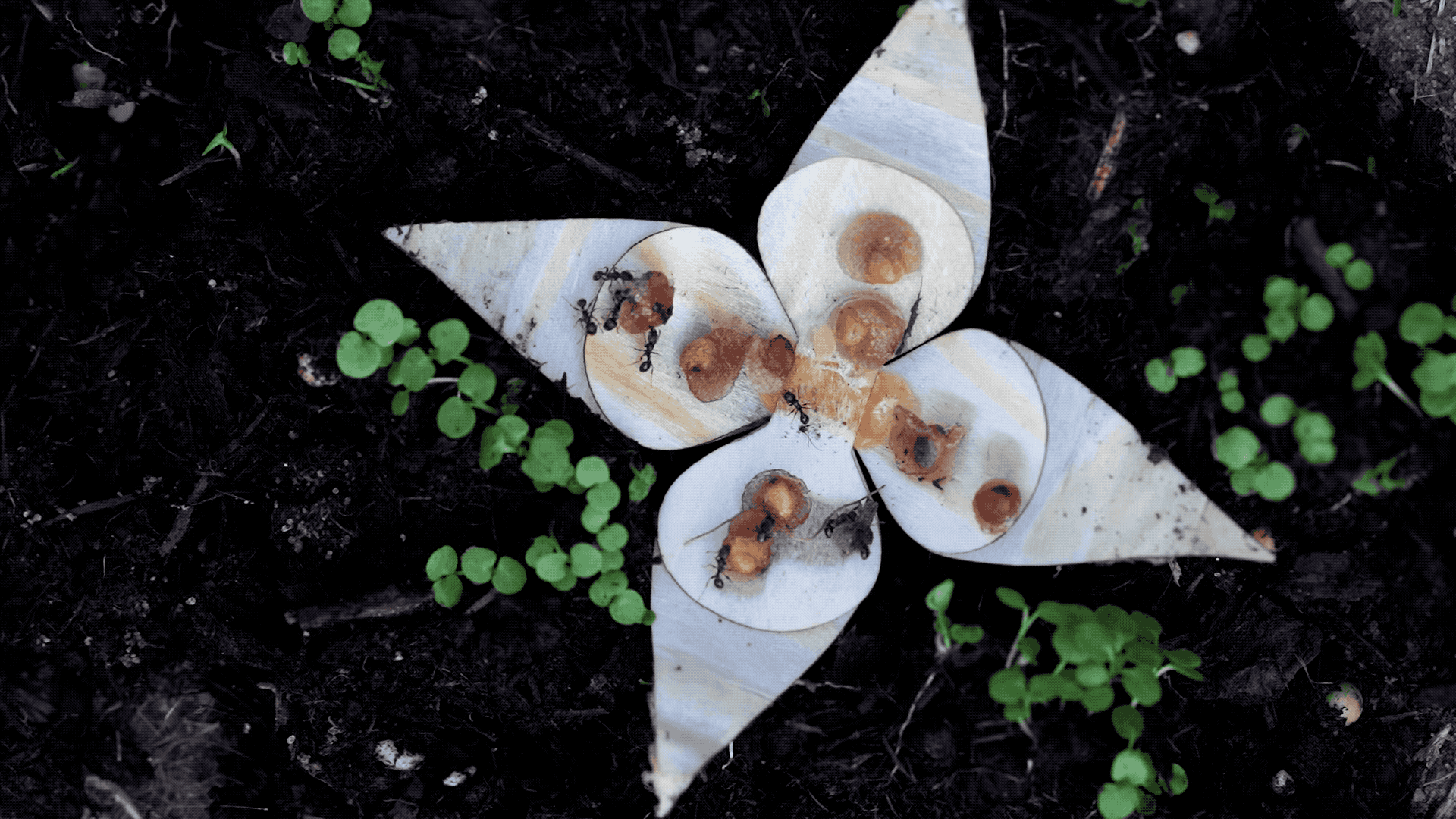
Degrade to Function: This concept challenges the conventional view of degradation as merely an end-of-life process, aiming to create eco-friendly and self-contained morphing devices that operate through a sequence of environmentally-triggered degradations.
Degrade to Fucntion: Towards Eco-friendly Morphing Devices that Function Through Programmed Sequential Degradation
2023-2024
While it seems counterintuitive to think of degradation within an operating device as beneficial, one may argue that when rationally designed, the controlled breakdown of materials—physical, chemical, or biological—can be harnessed for specific functions. To apply this principle to the design of morphing devices, we introduce the concept of "Degrade to Function" (DtF). This concept aims to create eco-friendly and self-contained morphing devices that operate through a sequence of environmentally-triggered degradations. We explore its design considerations and implementation techniques by identifying environmental conditions and degradation types that can be exploited, evaluating potential materials capable of controlled degradation, suggesting designs for structures that can leverage degradation to achieve various transformations and functions, and developing sequential control approaches that integrate degradation triggers. To demonstrate the viability and versatility of this design strategy, we showcase several application examples across a range of environmental conditions.
Qiuyu Lu*, Semina Yi*, Mengtian Gang, Jihong Huang, Xiao Zhang, Yue Yang, Chenyi Shen, Lining Yao
* Co-first Authors
In ACM User Interface Software and Technology Symposium (UIST). 2024. PDF | DOI
The “Degrade to Function” Strategy
The DtF concept proposes using controlled, gradual degradation of materials and structures to initiate a beneficial transformation, or "Function".
The Application Example
Five DtF examples across a range of ecosystems. Engineered for autonomous and sustainable operation with naturally degradable materials, the DtF morphing device is especially suitable for outdoor environments, minimizing the need for ongoing intervention or external power sources. This eco-friendly feature inspired us to fully leverage its advantages and construct five applications targeted at restoration and rehabilitation, addressing real-world environmental issues. The multiple sequential transformations offer broad applicability and the ability to execute various functions to help achieve these goals. Each application is developed for a different type of environmental conditions, collectively encompassing every design considerations to exemplify DtF device design and inspire innovation among researchers and designers.
Forest Feeder
Plants employ various strategies for seed dispersal. One example is fleshy structures called Elaiosomes, rich in fat and protein, attached to seeds to attract ants. Ants collect these seeds to nests, consume the Elaiosomes, and discard the seeds in nutrient-rich waste areas, aiding germination. This symbiotic relationship benefits both ants, gaining nutrition, and seeds, dispersed to fertile grounds.
We developed an automatic feeder and sower device. After being deployed in the forest, the pod lies in wait for the optimal moment to open. As the climate becomes warmer and more humid, dormant mold spores activate and begin to grow on the agar mixture constraint that binds the pod. This reveals seeds encased in an enticing synthetic elaiosome that the ants find irresistible. Drawn by the delicious morsel, ants carry the seeds back to their nests. There, the s-elaiosome is consumed, and the seeds may subsequently be discarded in the ants’ nutrient-rich waste areas, providing an ideal environment for them to take root and germinate.


We conducted preliminary tests in the field using seeds coated with s-elaiosome. We observed ants transporting the seeds and noted the presence of s-elaiosome-removed seeds around the nests. Continued observation can be conducted in the future to fully understand the dynamics of ant-seed interactions throughout the entire process.
Aquatic Habitat Restoration
Seagrass and rivergrass meadows are vital in aquatic ecosystems, providing nourishment, habitats, and nursery grounds for various species. Despite their importance, these meadows have been steadily disappearing globally in recent decades. Understanding the life cycle and specific requirements of aquatic plants is crucial for successful restoration efforts. Some underwater flowering plants, such as Posidonia oceanica, rely on photosynthesis for germination. However, only about ∼45% of solar energy penetrates to a depth of 1 meter underwater. Moreover, tidal fluctuations and water currents pose challenges for seeds to take root in seabeds.
We developed an artificial reef designed for delayed settling and autonomous deployment . Initially configured in a flat shape, these reefs allow for efficient packing and transportation. Once placed on the water’s surface, a buoyancy device keeps them afloat, allowing the seeds within the seed pods to germinate and flourish under abundant sunlight. Once seagrass is germinated, the reef will sink to the bottom of the ocean, allowing the grass to root and anchor to the ocean floor prior to reef expansion. Once unfolded, the expanded reef structure can potentially offer shelter to small marine creatures.


We conducted experiments that demonstrate the promising effectiveness of this approach in promoting aquatic plant growth.
Wildfire Detection and Monitoring
July 2023 marked a historic moment as it emerged as the hottest month since 1880. Moreover, the preceding half-year has witnessed more than 15 catastrophic climate events, encompassing phenomena such as droughts, heat waves, floods, and wildfires. A significant development has been the recent surge in both the frequency and intensity of wildfires, sparking heightened concerns. Amidst the widespread destruction caused by fires, nature has responded with various evolved strategies. These include mechanisms like heat-insulated meristems and post-fire resprouting. For instance, specific plants such as Banksia, which thrive in fire-prone environments, feature seed pods that open in reaction to heat. Similarly, seeds from Black Wattle (Acacia mearnsii) undergo expansion due to heat, triggering the initiation of the germination process.
Building on these insights, we’ve developed a low-cost wildfire monitoring system tailored for deployment in high-risk wildfire zones, particularly during dry seasons. This system features a carnauba wax constraint that degrades and disengages when exposed to the elevated temperatures associated with wildfires. Once this happens, a pre-compressed wooden elastic energy storage structure is released, catapulting small aerodynamic flyers into the air. These petite flyers are crafted from laser-cut wood veneer, with a thickness of 0.18 mm and a weight of 14 mg each. Once launched, these flyers may catch the strong winds generated by wildfires, enabling them to disperse over long distances.































